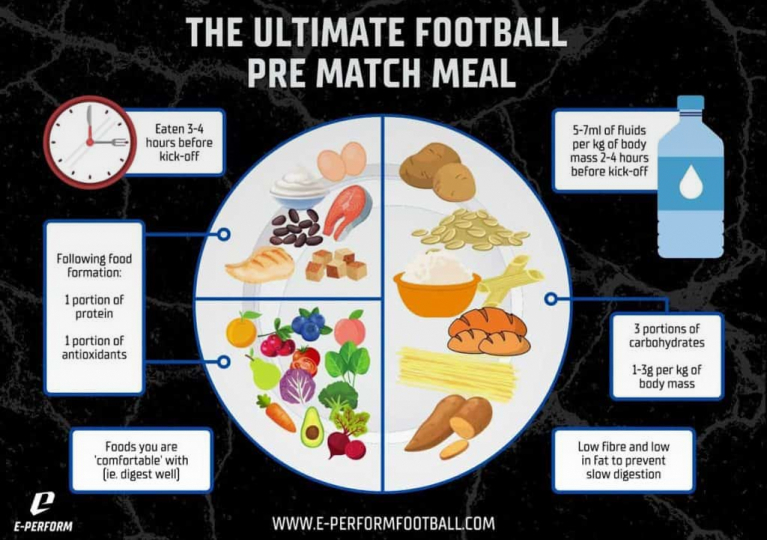“Youth Football Development in France: A Blueprint for Success
Related Articles Youth Football Development in France: A Blueprint for Success
Youth Football Development in France: A Blueprint for Success

France has consistently been a powerhouse in the world of football, boasting a rich history, passionate fanbase, and a remarkable track record of producing world-class players. While many factors contribute to this success, one aspect stands out: the nation’s robust and well-structured youth football development system. This system, often hailed as a blueprint for other countries, has been instrumental in nurturing young talent and shaping them into formidable professionals.
Historical Overview and Evolution
The development of youth football in France has evolved significantly over the decades. In the early to mid-20th century, youth football was largely decentralized, with clubs and local communities taking the lead. However, the need for a more systematic approach became evident as the game grew in popularity and competitiveness.
In the 1970s, the French Football Federation (FFF) began to take a more active role in shaping youth development. This led to the establishment of regional training centers and academies, which aimed to identify and nurture promising young players from across the country. The emphasis was on providing structured training, qualified coaching, and a holistic approach to player development.
A significant turning point came in the 1980s with the creation of the Institut National du Football (INF) Clairefontaine, a national football academy. INF Clairefontaine became the flagship of French youth development, serving as a training ground for the most talented young players in the country. The academy’s success in producing world-class players, such as Thierry Henry, Nicolas Anelka, and Kylian Mbappé, solidified its reputation as a center of excellence.
Key Components of the French Youth Football System
The French youth football system is characterized by several key components that contribute to its effectiveness:
-
National Federation Leadership: The FFF plays a central role in overseeing and regulating youth football development. It sets standards for coaching education, curriculum development, and competition structures. The FFF also provides funding and resources to support youth programs at the regional and local levels.
-
Regional Academies: France is divided into several regions, each with its own regional football academy. These academies serve as hubs for identifying and developing young talent within their respective regions. They provide intensive training, coaching, and educational support to promising players.

Club-Based Development: Football clubs at all levels, from professional to amateur, play a crucial role in youth development. Clubs are responsible for providing training and competitive opportunities for young players in their local communities. Many professional clubs have established their own youth academies, which serve as feeder systems for their first teams.
-
Emphasis on Education: The French youth football system places a strong emphasis on education. Young players are encouraged to pursue their academic studies alongside their football training. This ensures that they have alternative career options if they do not make it as professional footballers.
-
Qualified Coaching: The quality of coaching is a critical factor in youth development. The FFF has invested heavily in coach education, providing training and certification programs for coaches at all levels. This ensures that young players receive instruction from qualified and knowledgeable coaches.
-
Structured Competition: The French youth football system features a structured competition pyramid, with leagues and tournaments organized at the national, regional, and local levels. This provides young players with regular opportunities to test their skills and compete against their peers.
INF Clairefontaine: A Center of Excellence
INF Clairefontaine is a national football academy located in Clairefontaine-en-Yvelines, near Paris. It is widely regarded as one of the best football academies in the world. The academy’s mission is to identify and develop the most talented young players in France, providing them with the training, coaching, and educational support they need to reach their full potential.
Players at INF Clairefontaine typically spend three years at the academy, from the ages of 13 to 15. During this time, they receive intensive football training, academic instruction, and personal development support. The academy’s coaching staff includes some of the most experienced and qualified coaches in France.
INF Clairefontaine has produced a long list of world-class players, including Thierry Henry, Nicolas Anelka, Kylian Mbappé, Hatem Ben Arfa, Blaise Matuidi, and Olivier Giroud. These players have gone on to achieve success at the highest levels of the game, both for their clubs and for the French national team.
Benefits and Outcomes
The French youth football system has yielded numerous benefits and positive outcomes:
-
Talent Identification and Development: The system has been highly effective in identifying and developing young talent. It provides a pathway for promising players to progress from grassroots football to professional clubs and the national team.
-
Technical Proficiency: The emphasis on technical skills and tactical awareness has produced players who are technically proficient and tactically astute. French players are known for their ability to control the ball, pass accurately, and make intelligent decisions on the field.
-
National Team Success: The success of the French national team is a testament to the effectiveness of the youth development system. France has won the FIFA World Cup twice (1998 and 2018) and the UEFA European Championship twice (1984 and 2000), with many of the players in those winning teams having come through the youth system.
-
Export of Talent: French football clubs have become major exporters of talent to other leagues around the world. Many French players are highly sought after by clubs in England, Spain, Italy, and Germany.
-
Social and Economic Benefits: The youth football system provides opportunities for young people from all backgrounds to participate in sport and develop valuable life skills. It also contributes to the economy by generating revenue through player transfers, sponsorships, and media rights.
Challenges and Future Directions
Despite its success, the French youth football system faces several challenges and must continue to evolve to remain competitive:
-
Globalization: The increasing globalization of football means that French clubs face greater competition from clubs in other countries for young talent. French clubs must continue to invest in their youth academies to attract and retain the best young players.
-
Financial Disparities: Financial disparities between clubs can create an uneven playing field in youth development. Wealthier clubs may have an advantage in attracting and developing young talent.
-
Maintaining Standards: It is essential to maintain high standards of coaching and training at all levels of the youth system. The FFF must continue to invest in coach education and curriculum development.
-
Adapting to Changing Trends: Football is constantly evolving, and the youth system must adapt to changing trends in the game. This includes incorporating new technologies and training methods.
-
Inclusivity and Diversity: Ensuring inclusivity and diversity in youth football is crucial. Efforts should be made to provide opportunities for young people from all backgrounds to participate in the sport.
Conclusion
The French youth football development system is a model for other countries to emulate. Its emphasis on structured training, qualified coaching, education, and competition has produced a steady stream of world-class players. While challenges remain, the system is well-positioned to continue nurturing young talent and contributing to the success of French football for years to come. By investing in youth development, France has not only strengthened its national team but also created a sustainable ecosystem that benefits clubs, communities, and individual players. The continued evolution and adaptation of this system will be crucial in maintaining France’s position as a global footballing powerhouse.

